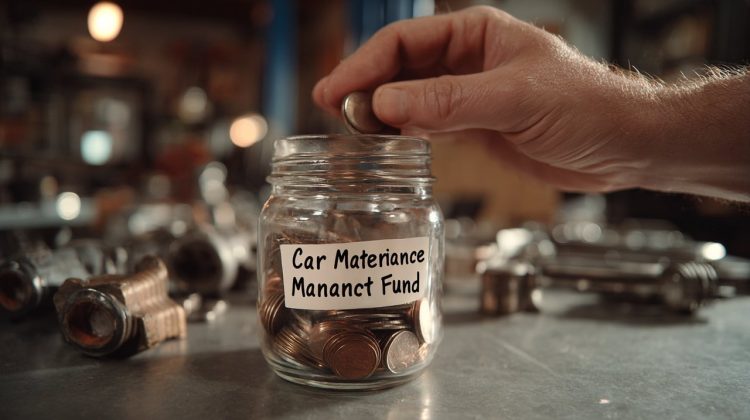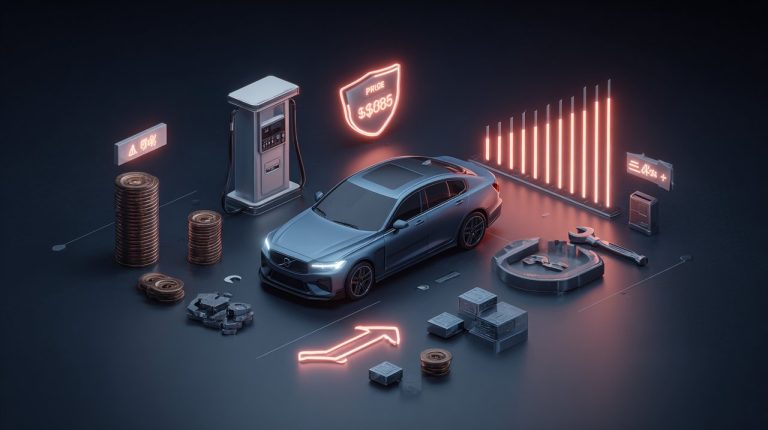Many of us tend to view car ownership as a straightforward equation: purchase price, fuel, and insurance. But beneath this seemingly simple surface lies a more intricate network of expenses, often overlooked. These hidden costs can introduce significant digital friction into your financial planning.
As a workflow integrator, I see financial command not as managing isolated outlays, but as designing a truly seamless system. In such a system, every cost, visible or not, is anticipated and elegantly integrated. This guide will uncover five hidden car ownership costs you might have missed in your budget.
Our goal is to transform these seemingly random “digital noise” components into manageable, predictable elements. By doing so, we construct a more resilient and frictionless financial ecosystem. Understanding these unseen architectural elements is crucial for designing a robust and fluid budget.

1. Depreciation’s Silent Erosion and Opportunity Cost
Depreciation is that often-forgotten component: the silent, continuous loss of your vehicle’s value from the moment it leaves the dealership. It’s not a direct cash payment, but an invisible consumption of asset value. This creates significant financial friction when you eventually sell or trade your car.
Think of it as an opportunity cost. Capital tied up in a continuously depreciating asset could otherwise be allocated to investments with greater growth potential. To truly integrate this implicit cost into your financial system, meticulously estimate the annual depreciation loss. Then, allocate it across each month when calculating your true monthly car expenses.
A smart strategy is to consider a certified pre-owned vehicle. These cars have typically already navigated the steepest part of the depreciation curve. This approach helps you sidestep the common budgeting oversight of focusing only on monthly loan payments, while overlooking the long-term erosion of your asset’s value.

2. The Intricate Network of Financing Interest and Fees
If you’re financing your vehicle, interest and associated fees (like origination or late payment charges) can add thousands to the total cost. These amounts are often obscured by the simplicity of a monthly payment. These are critical connection points within your financial system, and if mismanaged, they can introduce significant friction.
Higher interest rates, especially over longer loan terms, essentially mean you’re paying a premium for the convenience of ownership. Building a truly seamless financial process starts with understanding the total cost of your loan, not just the monthly installment. Aim to structure the shortest loan term you can comfortably manage to minimize the interest paid.
Proactively comparing options from traditional banks with credit unions often reveals more competitive rates from the latter. Their member-centric structure can significantly reduce this specific financial friction. It’s all about optimizing those connection points.
3. The Unpredictability of Insurance Policy Fluctuations
Car insurance premiums are far from static; they’re dynamic. Factors like your age, residency changes, claims history, or broader market trends can cause them to increase. While insurance is a vital protective layer, its information flow isn’t always smooth.
This volatility introduces unpredictable digital noise into your budget, making consistent financial planning a challenge. To integrate this variability into your financial blueprint, make it a practice to review your policy annually. Actively solicit quotes from diverse insurance providers.
Always inquire about potential discounts—for safe driving, bundling multiple policies, or installing anti-theft devices. As Benjamin Franklin wisely observed:
By failing to prepare, you are preparing to fail.
This adage is particularly apt for the often-overlooked variability of insurance costs. Proactive management here can smooth out significant budget bumps.
4. Maintenance and Repair’s Underlying Structural Costs
Beyond routine oil changes, your vehicle demands a range of periodic maintenance—think tire replacements, brake pads, timing belts, and fluid flushes. And of course, unexpected repair expenses can arise from malfunctions or accidents.
Your vehicle is a complex system, and like any system, it has wear points and potential failure points. Neglecting these is akin to disregarding the structural integrity of your financial plan. This can lead to abrupt disruptions in your budget flow due to sudden, large outlays.
To design a system that gracefully accommodates these structural costs, establish a dedicated “Automotive Maintenance and Repair” sinking fund. Even without an immediate repair need, contribute a consistent monthly amount (e.g., $50-$100) to this fund. This creates a smooth buffer for inevitable future expenses, effectively preventing financial friction from unforeseen events.
Remember, deferring routine maintenance to save immediate costs often results in more expensive, extensive repairs later. This is a false economy that generates significantly greater financial friction down the line.

5. The Invisible Accumulation of Administrative and Usage Fees
This category covers various smaller, yet potentially recurring or sporadic, expenses. Individually, these costs might seem negligible, but when unaddressed, they collectively form an invisible digital noise layer. This layer can significantly accumulate and disrupt your financial ecosystem.
These represent the seemingly minor, yet compounding, micro-transactions that can throw off your carefully designed budget. To integrate these invisible accumulations into your financial blueprint, itemize all administrative and usage fees relevant to your location and driving habits. Annualize these costs and integrate them into your monthly automotive budget.
For instance, these fees might include:
- Annual vehicle registration and license plate renewals
- Periodic emissions testing or safety inspection charges
- Parking fees and tolls for daily commutes or excursions
- Vehicle cleaning and detailing (e.g., regular car washes)
Even for sporadically occurring fees, allocating a small monthly buffer ensures your financial system remains fluid and adaptable. It’s about accounting for every tiny data point in your financial flow.
Just as a meticulously designed digital workflow anticipates every data point and connection, a truly robust car ownership budget accounts for every potential expenditure, explicit or implicit. By identifying these five often-forgotten costs—from the silent erosion of depreciation to the intricate network of various fees—you are not merely budgeting.
You are, in fact, architecting a comprehensive financial ecosystem. Embrace this philosophy of integration. Move beyond an an isolated view of automotive expenses and design a seamless financial process that anticipates every turn and contingency, which you can precisely calculate with our True Cost of Car Ownership Calculator True Cost of Car Ownership Calculator.
This holistic approach will not only save you capital but also deliver the profound peace of mind that comes with true financial preparedness. Your financial system will be resilient, and your mind at ease.
Action: Integrating Your Financial Workflow
Take some time today to review your current automotive budget. Pinpoint where these hidden costs might be generating unseen friction. Then, begin the process of integrating them into your financial blueprint. Your future self will undoubtedly be grateful for the absence of unexpected financial turbulence.
💡 Frequently Asked Questions
The article highlights five often-overlooked costs: depreciation, financing interest and fees, unpredictable insurance policy fluctuations, maintenance and repair expenses, and various administrative and usage fees.
Car depreciation is the continuous loss of your vehicle's value, which acts as an invisible consumption of asset value and creates financial friction when you sell or trade it. A smart strategy to mitigate this is to consider buying a certified pre-owned vehicle, as they have typically already passed the steepest part of the depreciation curve.
To manage car financing costs, you should understand the total cost of your loan, not just the monthly installment. Aim for the shortest loan term you can comfortably manage to minimize interest paid, and proactively compare rates from traditional banks with credit unions, as the latter often offer more competitive rates.
To prepare for these costs, the article suggests establishing a dedicated 'Automotive Maintenance and Repair' sinking fund. Contribute a consistent monthly amount (e.g., $50-$100) to this fund to create a smooth buffer for inevitable future expenses and prevent financial friction from unforeseen events.
Administrative and usage fees cover various smaller, recurring or sporadic expenses such as annual vehicle registration, emissions testing, parking fees, tolls, and car cleaning. While individually seemingly negligible, these costs can collectively accumulate and disrupt your financial ecosystem, making it crucial to itemize, annualize, and integrate them into your monthly automotive budget.








